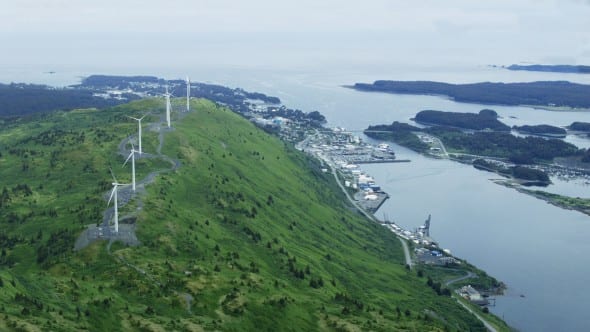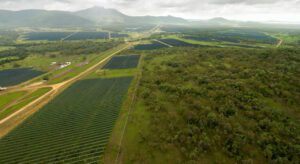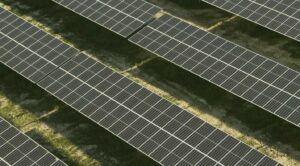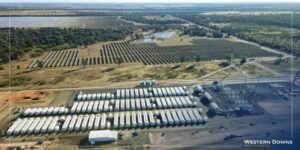Two of Australia’s leading cleantech companies, Carnegie Wave Energy and Energy Made Clean, have inked a $4.5 million deal to join forces to try and corner a part of the multi-billion dollar global market for renewable energy microgrids.
The deal will see the two companies focus their joint efforts on remote and island communities, using combinations of solar, wind, and wave power technology with battery storage.
ASX-listed Carnegie Wave purchase a 35 per cent stake in solar and storage specialists Energy Made Clean (EMC), via $1.5 million in Carnegie shares and $3 million in cash. It will also give Carnegie a seat on EMC’s board.
Carnegie, which switched on the world’s first grid-connected wave power energy array just over a year ago, has recently turned its focus to micro-grids, particularly those that can be combined with wave energy and recently won a deal to use its CETO wave energy technology to develop a  renewable energy microgrid for Mauritius.
renewable energy microgrid for Mauritius.
It also signed a Memorandum of Understanding with the Republic of Seychelles in September 2015, to investigate opportunities for both grid-scale and microgrid-connected systems.
In Australia, the company is in the process of developing its Garden Island Microgrid Project, announced in October last year, which once completed will consist of Carnegie’s CETO 6 array, the existing Garden Island reverse osmosis desalination plant, 2MW of solar PV power generation, and sufficient energy storage to allow safe, stable and reliable interaction with the electricity grid.
EMC – which in 2015 won the tender to supply a 1.2MWh battery system for a ground-breaking community energy storage trial in WA’s Alkimos Beach – has also recently formed a strategic alliance with New Zealand firm Infratec, another regional leader in renewable generation, transmission and distribution.
The alliance with Carnegie – which EMC CEO John Davidson told RenewEconomy was a “very different deal” to that with Infratech – aims to pool the two Australian companies’ collective experience, resources, skills and expertise, as they target both domestic and international markets, and particularly the Indian Ocean island markets, which Carnegie has been targeting.
“The Carnegie deal is about collaborative approach, where we empower them with what we do with batteries and solar and microgrids, and they empower us with their wave power technologies,” Davidson said from the sidelines of the Remote Area Power Supply Conference in Melbourne on Tuesday.
The other important part of the Carnegie deal, he said, was the cash and script investment, which was “very timely” for EMC given the rapid rate of growth the business had experienced over the last 12 months, with staff levels jumping from 15 this time last year to 60 today.
“We’ve been gearing up for the last 12 months,” Davidson told RE. “A lot of our customers are utilities and governments… The alliance with Carnegie will help deliver a lot of (investor) confidence.”
For Carnegie, the investment in EMC is expected to help accelerate the commercialisation of its CETO wave power technology in island markets, giving the company a stake in a rapidly growing market.
“The global microgrid market is estimated to be worth US $40 billion by 2020, up ten-fold from 2013,” said Carnegie CEO Michael Ottaviano. “Our strategy for island markets is to deliver CETO as part of an integrated microgrid solution.
“Having already won and kicked off a package of work in Mauritius, including the delivery of a wave-integrated microgrid, I’m delighted to have EMC on board to assist in the delivery of this project,” he said.
“EMC itself is experiencing rapid growth and is likely to exceed $15 million in turnover this financial year, up from $5 million in 2014/15.
“Combined with Carnegie’s own CETO technology, technical capability, ASX structure, governance and international reach we will now have the capability to finance, construct, own and operate commercial scale wave-integrated renewable microgrid solutions globally. We are already actively working together on this now.”








